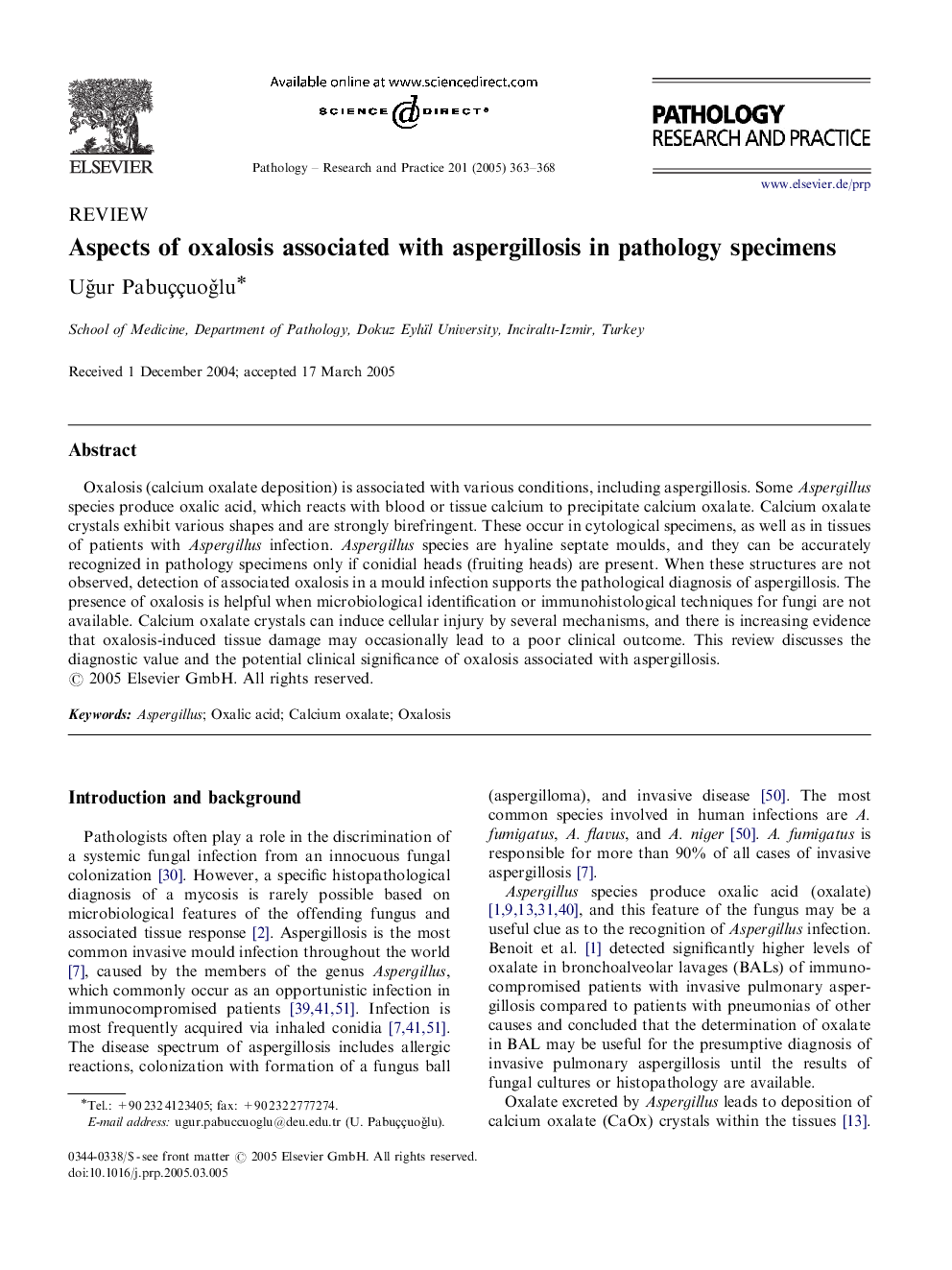| Article ID | Journal | Published Year | Pages | File Type |
|---|---|---|---|---|
| 10916934 | Pathology - Research and Practice | 2005 | 6 Pages |
Abstract
Oxalosis (calcium oxalate deposition) is associated with various conditions, including aspergillosis. Some Aspergillus species produce oxalic acid, which reacts with blood or tissue calcium to precipitate calcium oxalate. Calcium oxalate crystals exhibit various shapes and are strongly birefringent. These occur in cytological specimens, as well as in tissues of patients with Aspergillus infection. Aspergillus species are hyaline septate moulds, and they can be accurately recognized in pathology specimens only if conidial heads (fruiting heads) are present. When these structures are not observed, detection of associated oxalosis in a mould infection supports the pathological diagnosis of aspergillosis. The presence of oxalosis is helpful when microbiological identification or immunohistological techniques for fungi are not available. Calcium oxalate crystals can induce cellular injury by several mechanisms, and there is increasing evidence that oxalosis-induced tissue damage may occasionally lead to a poor clinical outcome. This review discusses the diagnostic value and the potential clinical significance of oxalosis associated with aspergillosis.
Related Topics
Life Sciences
Biochemistry, Genetics and Molecular Biology
Cancer Research
Authors
UÄur PabuççuogËlu,
